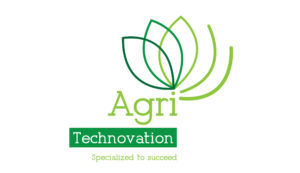Rochelle Thuynsma, Head of Products: Technical
KELPURA™ is a pure liquid kelp-based plant biostimulant derived from the South African kelp species Ecklonia maxima. It is produced using a proprietary room-temperature extraction technology that preserves the integrity of the kelp’s natural bioactive compounds, including phytohormones, phenolic acids, amino acids and polysaccharides.
This preservation is critical, as bioactive molecules are easily degraded by thermal processing, yet they play a key role in plant reproductive physiology (Stirk & van Staden, 2014). By retaining these compounds in their native state, KELPURA™ delivers a multi-component biostimulant system that supports crop resilience and reproductive efficiency during critical phenological stages.
KELPURA™ mode of action
A distinctive feature of KELPURA™ is its complex bioactive content, which counteracts the negative influence of stress-induced abscisic acid (ABA) and ethylene. Elevated ABA and ethylene during flowering and fruit initiation often result in flower abortion, reduced pollen viability and premature fruit drop under abiotic stress conditions such as drought and heat (Sharma et al., 2013).
The bioactive of KELPURA™ enhances flower retention, promotes cell division and facilitates calcium uptake by modulating calcium transporter gene expression and enhancing sink strength tissues (Khan et al., 2015). KELPURA™ also provides high levels of precursors for supporting the phenylpropanoid pathway that supports both cytokinin biosynthesis.
The cytokinin-like activity of KELPURA™ is particularly significant during reproductive phenology of fruit crops. Exogenous cytokinins and cytokinin-like compounds have been shown to increase mitotic activity in ovary and endosperm tissues, resulting in higher initial cell numbers and larger potential fruit size (Werner et al., 2003).
Furthermore, by strengthening sink activity, cytokinins enhance phloem unloading of sugars and mineral nutrients, particularly calcium, into flowers and developing fruits (Kuiper et al., 1990).
Product positioning
The positioning of KELPURA™ within reproductive phenology highlights the precision design of Agri Technovation’s crop solutions, which target specific physiological demands during flowering and fruit set. Agri Technovation produces a range of engineered products that focus on supporting specific reproductive phenological stages.
Reproductive phenology in fruiting crops progresses through induction, fruit set and cell division, with each stage offering a critical opportunity for targeted intervention.
During induction, products such as TRY ME™ strengthen floral sink activity by supporting carbohydrate reserves, ensuring meristems commit effectively to flowering. In the subsequent phase of rapid cell division, the combined synergy of KELPURA™ and CALCINATOR™ sustains cell division and cell wall integrity by improving calcium uptake.
Conclusion
KELPURA™ represents an advanced, engineered biostimulant designed to address the complex physiological challenges of reproductive phenology in fruit crop production.
By harnessing the full spectrum of bioactive compounds derived from Ecklonia maxima, KELPURA™ integrates phytohormone balances and enhanced nutrient uptake to support the most sensitive stages of reproductive phenology.
TRY ME™ Fertilizer group 1, Reg. no. K9552 |Act 36 of 1947.
KELPURA™ Fertilizer group 3, Reg. no. M442, Act 36 of 1947.
CALCINATOR™ Fertilizer group 2, Reg. no. B5022, Act 36 of 1947.
References
1. Almeida, J. & Oliveira, M. (2010). Hormonal regulation of fruit set and development in tomato: interaction between auxin and gibberellins. Plant Growth Regulation, 62, 63–70.
2. Khan, W., Rayirath, U.P., Subramanian, S., Jithesh, M.N., Rayorath, P., Hodges, D.M., Critchley, A.T., Craigie, J.S., Norrie, J. & Prithiviraj, B. (2009). Seaweed extracts as biostimulants of plant growth and development. Journal of Plant Growth Regulation, 28(4), 386–399.
3. Kuiper, D., Schuit, J. & Kuiper, P.J.C. (1990). Actual cytokinin concentrations in plant tissues as an indicator of sink/source relationships. Plant and Cell Physiology, 31(4), 565–573.
4. Mandzhieva, S.S., Minkina, T.M., Sushkova, S.N., Chaplygin, V.A. & Burachevskaya, M.V. (2022). Benzoic acid in plant metabolism: physiological roles and stress responses. Environmental Science and Pollution Research, 29, 65702–65714.
5. Santi, C., Zamboni, A., Varanini, Z. & Pandolfini, T. (2017). Growth stimulatory effects and transcriptome changes induced by protein hydrolysates in maize seedlings. Frontiers in Plant Science, 8, 433.
6. Sharma, P., Jha, A.B., Dubey, R.S. & Pessarakli, M. (2013). Reactive oxygen species, oxidative damage, and antioxidative defense mechanism in plants under stressful conditions. Journal of Botany, 2012, 1–26.
7. Stirk, W.A. & van Staden, J. (2014). Seaweed products as biostimulants in agriculture. In: du Jardin, P. (ed.), The Science of Plant Biostimulants. EU Commission Report, Brussels, pp. 31–55.
8. Vardhini, B.V. & Rao, S.S.R. (2012). Brassinosteroids – a class of phytohormones: their role in stress tolerance of plants. In: Ahmad, P. & Prasad, M.N.V. (eds.), Abiotic Stress Responses in Plants. Springer, New York, pp. 297–323.
9. Werner, T., Motyka, V., Laucou, V., Smets, R., Van Onckelen, H. & Schmülling, T. (2003). Cytokinin-deficient transgenic Arabidopsis plants show multiple developmental alterations indicating opposite functions of cytokinins in the regulation of shoot and root meristem activity. Plant Cell, 15, 2532–2550.
10. White, P.J. & Broadley, M.R. (2003). Calcium in plants. Annals of Botany, 92(4), 487–511.
11. Zhang, K., Novak, O., Wei, Z., Gou, M. & He, K. (2021). Endogenous cytokinin biosynthesis and signalling are required for ovary survival and fruit set in Arabidopsis. Plant Cell Physiology, 62(4), 644–657.





